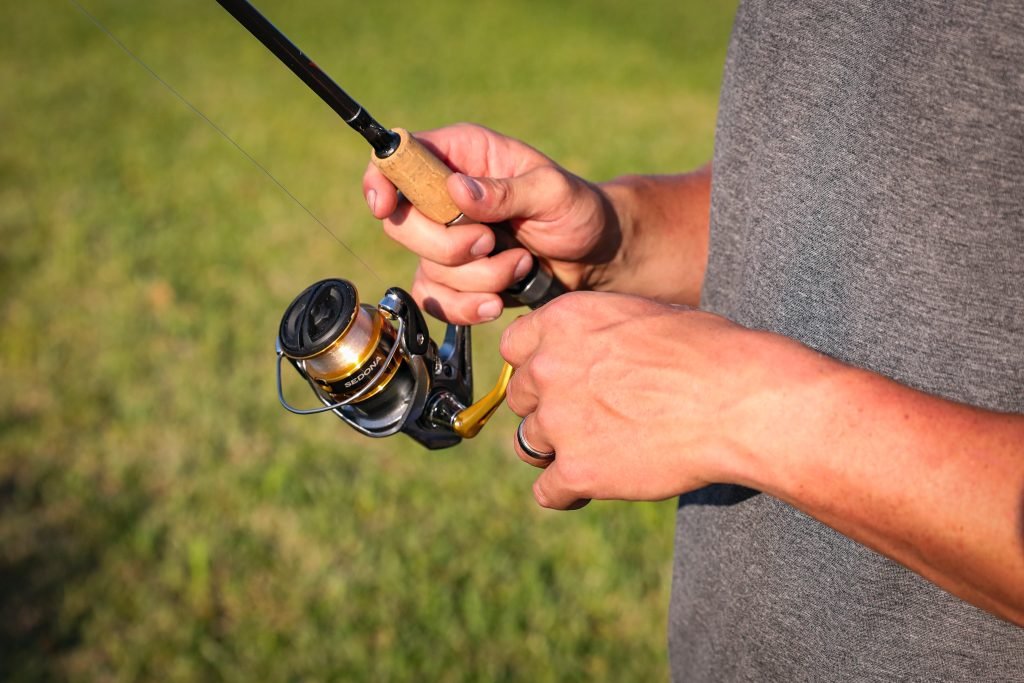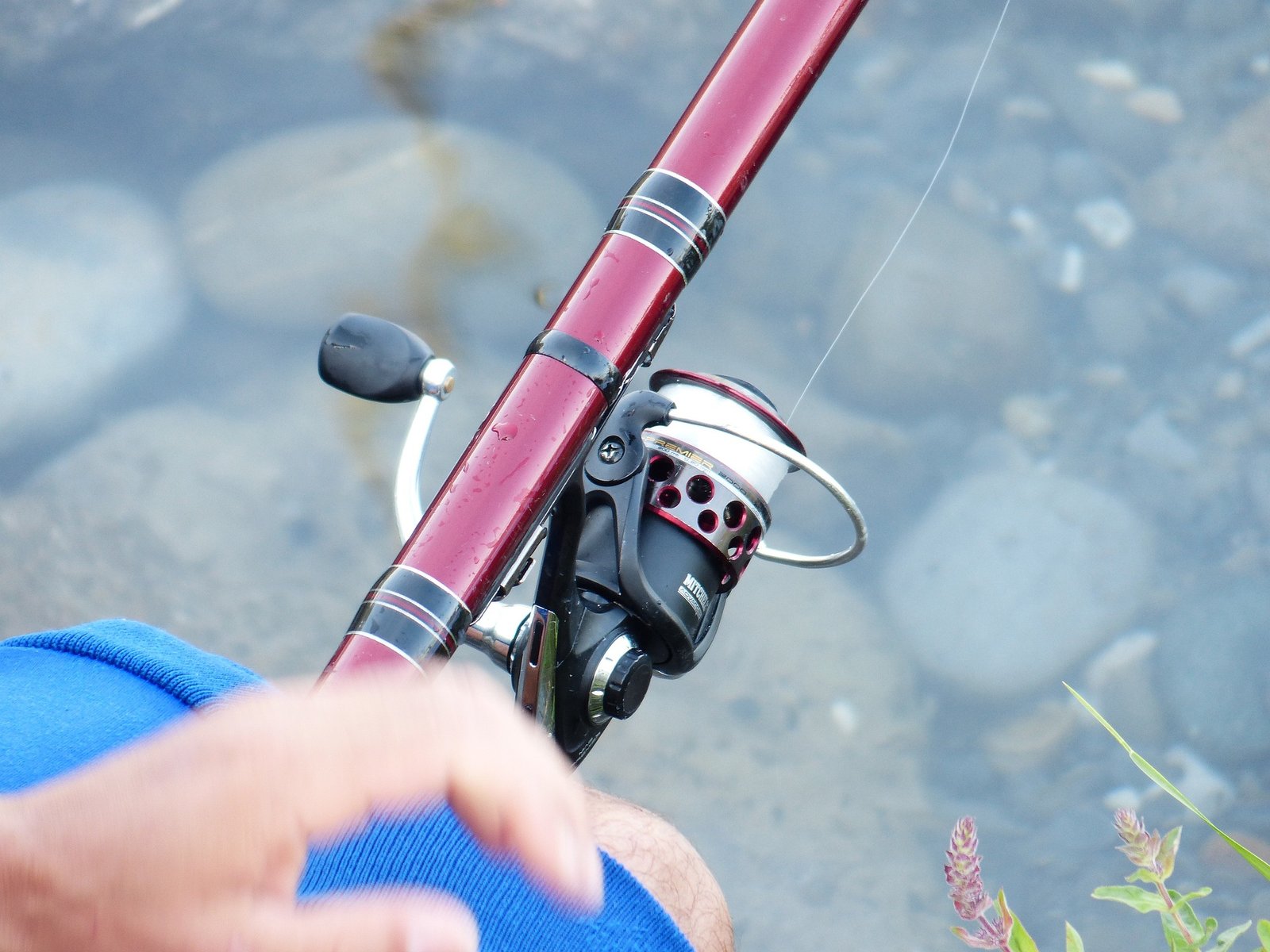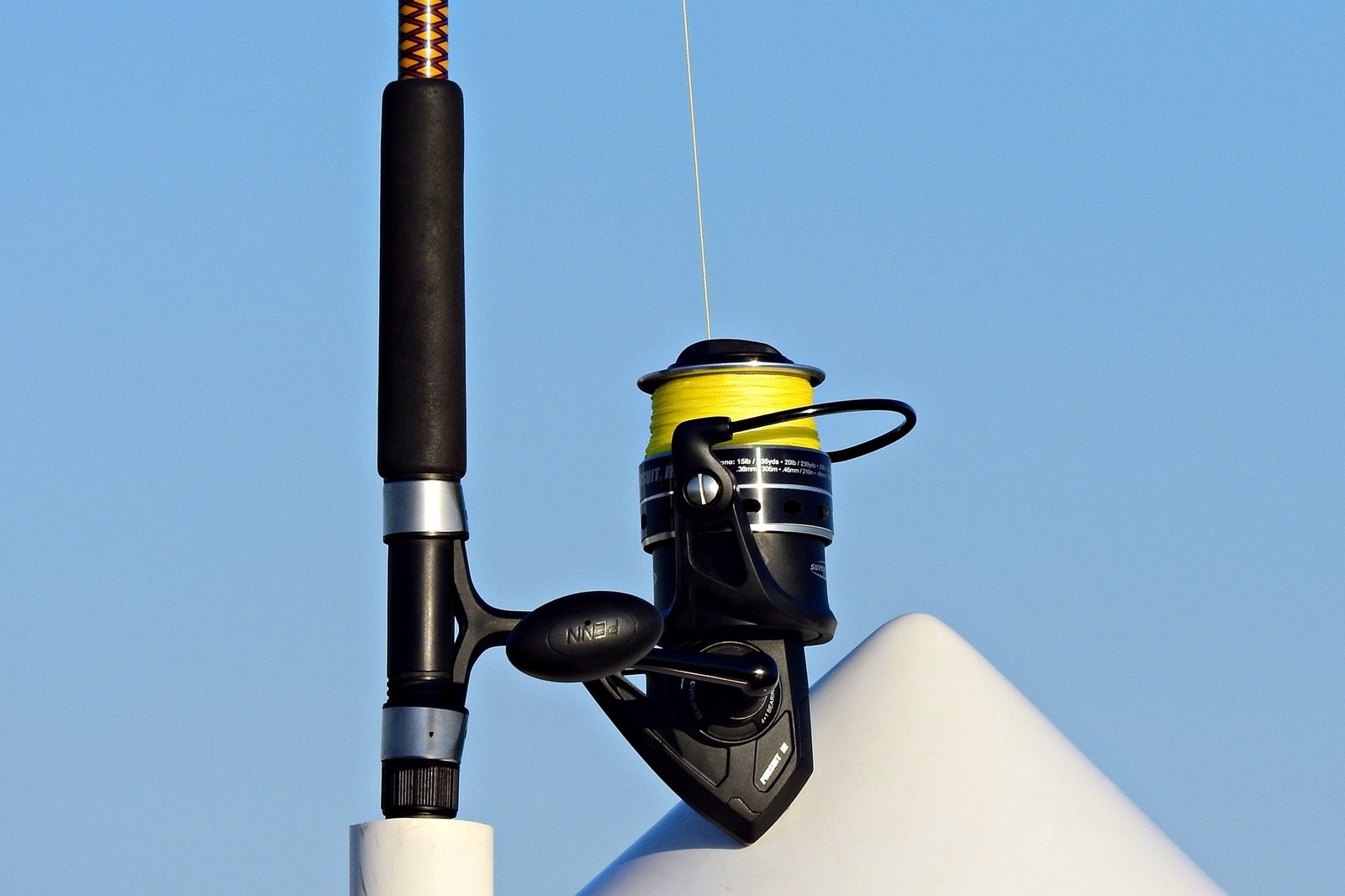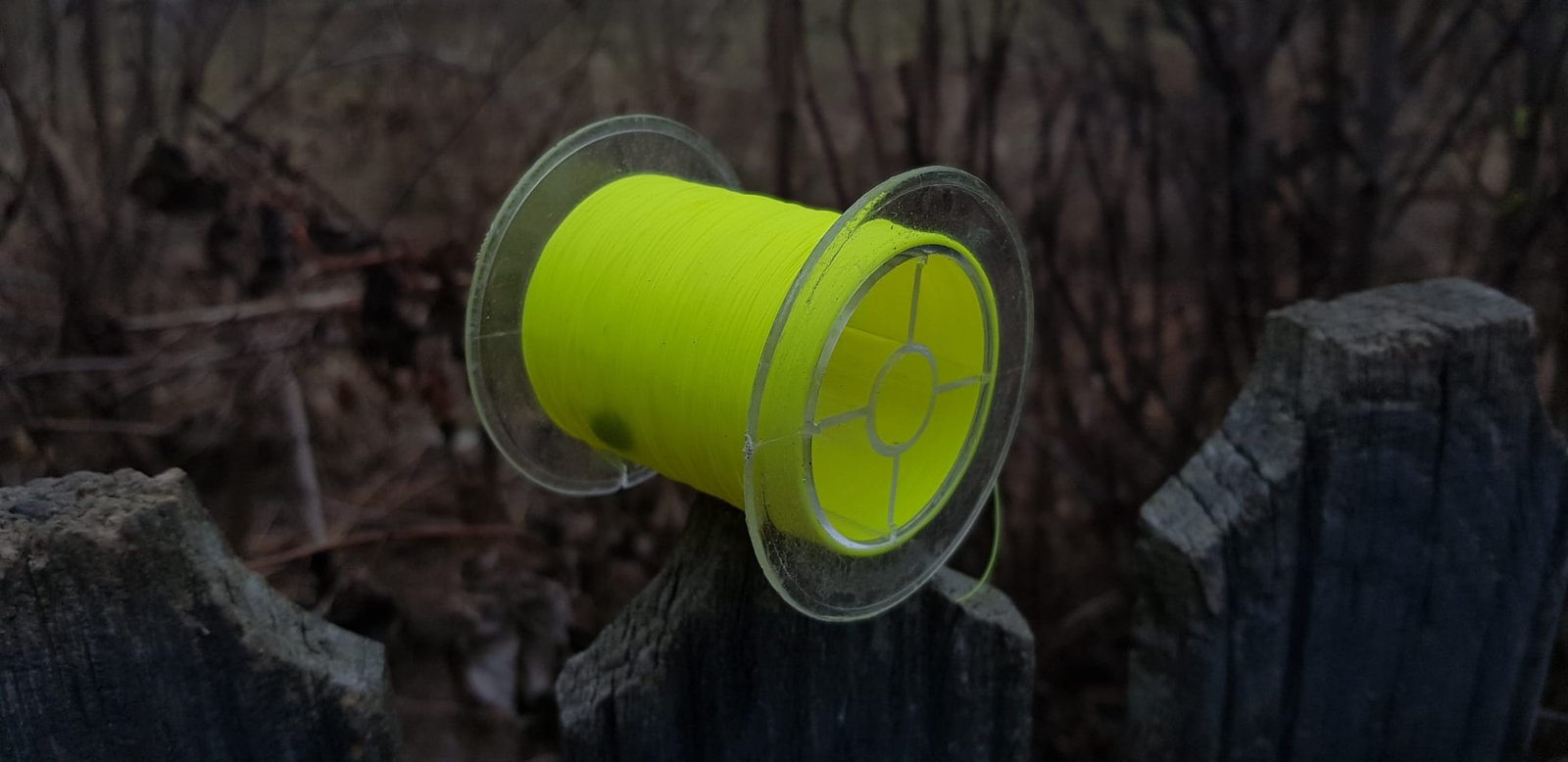
Ultralight fishing is as fun as fishing can get.
Catching fish smaller than my palm with tackle that would get ripped in half (or just seems like it) by a slightly larger fish never gets old.
In a previous article I was saying the same thing about deep sea fishing, which is the exact opposite of ultralight. Kinda shows what type of angler I am…
But every type of fishing has its own beauty to it, no further debate on that.
Back to our ultralight fishing, is there even such thing as the best line for spinning reels, that’s also ultralight?
The answer is yes, and it can get a little complicated if that’s what you want.
So, without further ado, let’s get into the details.
In a hurry? Go straight to the best options.
What Makes a Line Good for Spinning Reels?
The straightforward answer is that you want a strong & sensitive line that flies off the spool smoothly, avoiding tangles.
But for that, the first thing that comes in mind is memory.
If you just got into fishing, we’re specifically talking about line memory.
You’re going to see it in monofilament and fluorocarbon lines mainly. When the line takes the shape of the spool it’s been on over time, that’s called line memory. It can affect your casting distance and cause tangles if not managed properly.
So, how does each type of line perform in this case?
Here’s a short breakdown of each:
- Monofilament: Holds some memory to it, although it highly depends on the quality of the line. A good affordable overall choice.
- Fluorocarbon: Holds even more memory to it, but again, quality is a crucial factor here. They’re virtually invisible under water and very sensitive. Stuff like Seaguar Tatsu are examples of low-memory supple fluorocarbon, but they can get quite expensive.
- Braid: Holds the least memory, strong and sensitive, but not as finesse.
But keep in mind that you shouldn’t pick a line based on memory alone. Sensitivity and strength are also two crucial factors.
The fix for excessive memory is line conditioner. It decreases memory and, as a result, increases casting distance. Apply it while spooling your line or the night before fishing. See Kevin VanDam’s Line & Lure Conditioner.
The Best Line for Ultralight Fishing
Does the list above mean that everyone should use braid? By any means, no.
Ultralight braided line do have have some issues to them, such as knot strength and overall handling. We’ll talk about it bellow.
Monofilament
If you’re on a budget, pick monofilament.
It’s still going to perform reasonably in most scenarios, although sensitivity is where you’re going to see flaws. It stretches visibly, even while tying knots.
Is it really a big deal? If that extra fraction of second before feeling the bite and setting the hook bothers you, it might be. Keep in mind that sometimes it makes the difference between a catch and lost fish.
For shallow applications, where you see your lure most of the time, it’s a good option. Let me elaborate, when you see fish biting your lure, you already know when to set the hook. But when the lure is 50ft away or the water is murky, memory and stretch may play with the sensitivity a little.
Fluorocarbon
Fluoro is for maximum sensitivity and finesse.
It’s nearly invisible in the water and has little to no stretch, which means better sensitivity. I also must mention the superior abrasion resistance. If you find yourself fishing around structure and vegetation, a durable line is definitely a good choice.
As mentioned above, you’ll want to have some line conditioner to get the most out of it.
Braid
Sensitive, strong, low memory, and abrasion resistant. What do you want more?
Well, it lacks finesse. For this reason, you’ll want a fluorocarbon leader to get the most out of it. Braid and fluoro are both very abrasion resistant, so they combine everything for the best out of all.
It also makes light lures fly significantly further.
Sounds good, right? It’s not required for catching fish, but certainly nice to use.
But as any other line out there, braid is still going to have its flaws. 4lb breaking strain braid is going to have a diameter of 0.08 millimeters, which is incredibly thin. This means knots will be a little hassle to tie, and if you don’t do them properly, they might slip and break.
So consider your experience and see if you’re up for the challenge.
Top Ultralight Lines on the Market
For those who didn’t came for the guide only, let’s see what are the top options for each type of line:
Ultralight Monofilament
Berkley Trilene
))/1950453.json?hei=600&wid=600&$Soc_facebook$)
The Berkley Trilene XL excels in ultralight fishing scenarios, offering a blend of flexibility and low memory for easy handling and casting. You’ll appreciate its durability and smoothness, which facilitate longer casts and reduce the risk of line twists and kinks. Its high knot strength and sensitivity make it a reliable choice for targeting small, cautious fish.
See on:
Sufix Elite Mono
))/3761743.json?hei=600&wid=600&$Soc_facebook$)
The Sufix Elite Monofilament is a standout for ultralight fishing, boasting a perfect balance of strength and manageability. Its low memory ensures smooth casting, while the consistent diameter throughout the spool enhances precision. Anglers value its sensitivity and knot strength, which are crucial when targeting delicate biters. The Sufix Elite’s durability also means less frequent line changes, saving time on the water.
See at:
Ultralight Fluorocarbon
Seaguar Tatsu
))/3275167.json)
Seaguar Tatsu Fluorocarbon Line is a top-tier option for anglers seeking unparalleled sensitivity and knot strength. Its double-structure design combines two custom resins, creating a line that’s both supple and durable. Ideal for ultralight applications, Tatsu offers low memory, excellent castability, and near invisibility underwater, making it a favorite for discerning anglers targeting finicky fish.
See at:
Daiwa Samurai
Daiwa Samurai Braid is a superb choice for ultralight enthusiasts demanding high sensitivity and zero stretch. This eight-strand weave braid is remarkably thin and smooth, allowing for longer casts and better lure action. Its enhanced design reduces line friction on the guides, and its exceptional strength-to-diameter ratio means you can spool more line without sacrificing performance, providing a stealthy approach for skittish species.
See at:
Ultralight Braided Lines
SPRO Finesse Braid
SPRO Finesse Braid is praised for its thin diameter and sensitivity, allowing ultralight anglers to feel subtle bites and work with lightweight lures effectively. Its strong, tightly-woven construction provides durability and reduces the likelihood of wind knots, making it a reliable choice for precise presentations.
See at:
Suffix Performance Braid
))/3668478.json)
Sufix Performance Braid is known for its superior strength-to-diameter ratio, offering a robust line that doesn’t compromise casting distance. Its smooth texture allows it to glide through guides with minimal friction, enhancing castability. Additionally, it exhibits excellent knot strength and abrasion resistance, which is beneficial for anglers targeting fish in challenging conditions.
See at:
Frequently Asked Questions
What are the advantages of braided line for ultralight spinning reels?
Braided line is a popular choice for ultralight spinning reels because it offers several advantages. Firstly, braided line is thinner and stronger than monofilament line, which means that you can use a higher pound test line without sacrificing sensitivity. Secondly, braided line has zero stretch, which means that you can feel even the slightest nibble on your bait. Lastly, braided line is very durable and can withstand abrasions from rocks and other underwater obstacles.
How do I choose the best line weight for ultralight spinning?
When choosing a line weight for ultralight spinning, it is important to consider the type of fish you are targeting and the size of your spinning reel. Generally, ultralight spinning reels are designed to handle line weights between 1 and 6 pounds. For small panfish or trout, a 2-4 pound test line is ideal. For larger species such as bass or walleye, a 6 pound test line may be necessary.
Can braided lines be effectively used on ultralight spinning reels for bass fishing?
Yes, braided lines can be effectively used on ultralight spinning reels for bass fishing. Braided line offers excellent sensitivity and allows you to feel even the slightest nibble on your bait. In addition, braided line has zero stretch, which means that you can set the hook quickly and efficiently. However, it is important to note that braided line is more visible in the water than monofilament or fluorocarbon line, which may spook some fish.
What characteristics make a fishing line suitable for ultralight spinning in saltwater?
When fishing in saltwater with an ultralight spinning reel, it is important to choose a line that is both strong and corrosion-resistant. Braided line is a good choice because it is strong and does not break down in saltwater. Fluorocarbon line is also a good choice because it is virtually invisible in the water and is resistant to abrasions.
How does line diameter affect casting distance on ultralight spinning reels?
Line diameter can have a significant impact on casting distance on ultralight spinning reels. Thinner lines have less air resistance and are able to travel further through the air than thicker lines. However, thinner lines are also more difficult to handle and can be more prone to tangling. It is important to find a balance between diameter and manageability when choosing a fishing line for ultralight spinning.
What reel size is recommended for an optimal ultralight spinning setup?
When choosing a reel for an ultralight spinning setup, it is important to consider the size and weight of the fish you are targeting. A 1000 or 2000 (or even 500) size spinning reel is generally suitable for most ultralight fishing situations. These reels are lightweight and compact, making them easy to handle and transport. However, if you are targeting larger fish, you may need to use a larger reel with a higher line capacity.




